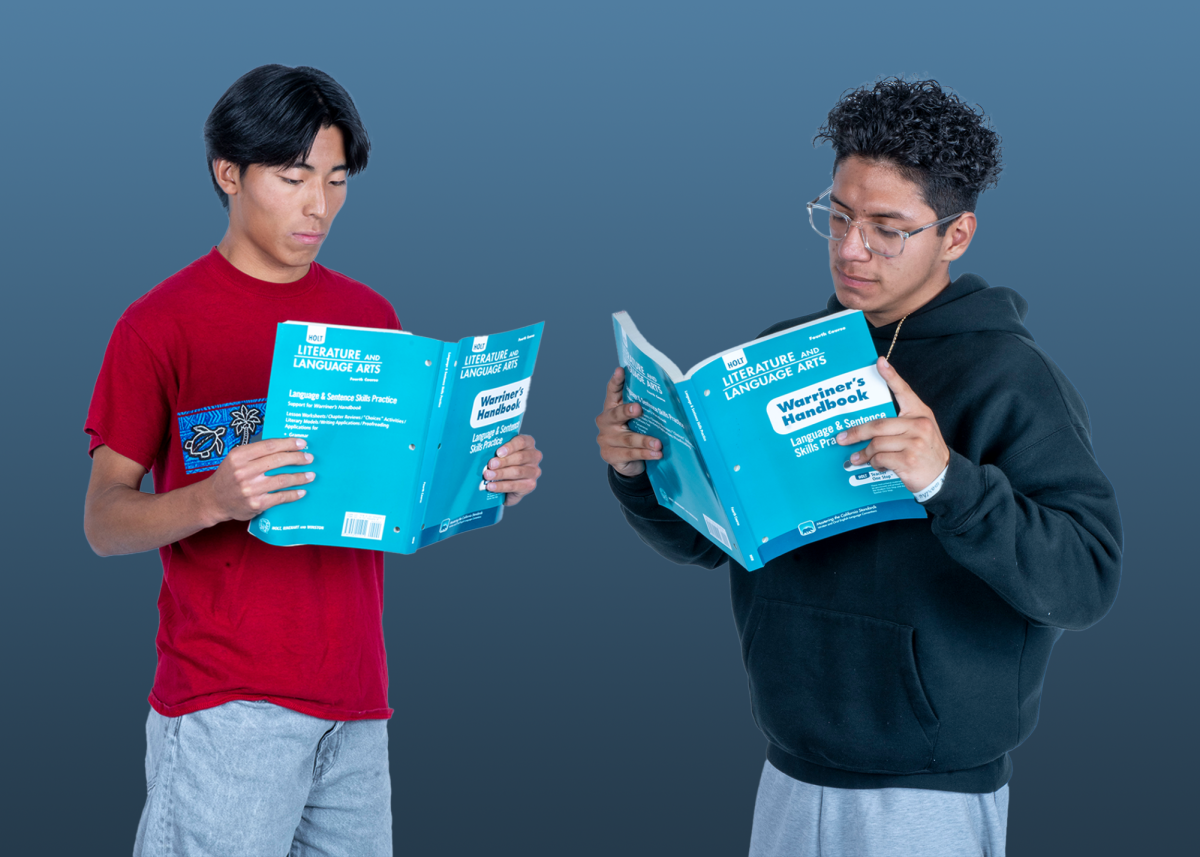For many incoming freshmen, the jump from middle school to high school is a massive one; it is a new school, more people and harder classes. However, on senior Yuto Kuroda’s first day of high school as a freshman, he faced more challenges than most. For him, everything — American culture, the English language, his classmates — was new to him.
Having recently moved from Osaka, Japan to the United States due to his father’s business in real estate, this was his first time entering an American high school. At first, connecting with his peers proved challenging due to language barriers, as Kuroda, who is fluent in Japanese, struggled to communicate with those around him who only spoke English.
“It was a completely new environment, and I didn’t know English at all,” Kuroda said. “It was hard. I couldn’t make any friends for two months in English and Biology.”
On top of social challenges, Kuroda encountered new challenges academically, like having trouble understanding material in multiple classes. It was through a lot of effort, search engines and a helpful Japanese friend that Kuroda was able to push through.
“I didn’t ask my teacher for help because I didn’t understand English at all. I thought that even if I asked them for help, they would make it more confusing,” Kuroda said. “Back then, I had a Japanese friend who grew up in the United States, so I asked him for help. [But] most of it, I did by myself and tried to understand.”
As a non-English speaker, Kuroda was enrolled in the English Learning Department (ELD), an academic course pathway taken as an art elective, structured around teaching English vocabulary words, spelling, reading comprehension, etc. The class is taught by Gregory Frank, who has been the ELD specialist here for three years and works to build a safe and educational environment for English learners (ELs).
“I try to foster a welcoming environment as much as possible. There’s no anxiety; we’re all friends,” Frank said. “[English learners] sacrifice a lot to be here. Meeting new people, [not knowing] the language – that’s really scary. They all come in because they feel comfortable that I’m going to be the one to support them. That’s why I come to work every day.”
Junior Gustavo Toc Mendez is one of many English learners enrolled in ELD, and the pathway has allowed him to become a part of a diverse community of people who share his struggles.
“[The ELD] is nice because you meet a lot of people, not just from here, but from other countries,” Toc Mendez said. “After learning English, a lot of opportunities opened in my life. I was able to communicate with others and could do things that I love to do now.”
Toc Mendez moved from Guatemala City, Guatemala to the U.S. as a fourth grader seven years ago and was enrolled in the ELD program until freshman year. During his earlier years, Toc Mendez struggled in school.
“When I came here, at first, I didn’t know anything — zero English,” Toc Mendez said. “It was hard, not just because I didn’t speak English, but because I came in the middle of the [school] year, I had to get to know all the concepts and learn English at the same time.”
Luckily, his fourth-grade teacher knew some Spanish and aided Toc Mendez with learning English and other class material. However, the additional challenge of transferring midway through the school year still took its toll, making it even more difficult for Toc Mendez to build connections with his peers.
“I didn’t really know anybody, so it was hard for me to make friends during that time because, of course, I didn’t speak [any] English,” Toc Mendez said. “There were a few students who spoke Spanish pretty well, and they helped me a bit with my classes and all that. They could probably have helped me more, but the fact that I couldn’t ask for help that [well from] others probably affected me.”
Many English learners who immigrate to the United States and attend RUHS struggle to familiarize themselves with the unfamiliar environment, get lost on the large campus, have a difficult time making new friends and struggle in class. Frank encourages teachers to better support English learners through simple actions like giving them a tour of the campus or checking in on them periodically. These gestures can have massive impacts on an English learner’s high school experience.
“Be compassionate. If [English learners] ask for extra time, it’s an accommodation, not a modification. You shouldn’t make an EL read less or write less, but you should scaffold them with sentence starters, sentence frames and chunking the reading if you can break it up in any way,” Frank said. “Focus on vocabulary, doing hands-on projects in groups and [providing EL students with] a partner to work with that the student is comfortable with.”
There are also many ways that students can aid English learners, not just teachers. Moving to an entirely new school and country is a big change that can be made easier by peers who make English learners feel acknowledged and included.
“A way to connect with an EL student is asking them how they say a certain word in their native language,” Frank said. “That builds a bit of cultural connection. We’re all students here at the same high school. We’re all doing the same thing. No one is vastly different than the rest of us.”
Reaching out to English learners is something Kuroda also encourages. Kuroda himself was able to find a home on the volleyball team through student outreach, growing from his quiet freshman self to an extroverted senior because of his teammates.
“Since I joined the volleyball team, I [made] a lot of friends. They were all so friendly and talked to me. It [made it] easier for me,” Kuroda said. “If teachers or people whose first language is English start a conversation with [non-native speakers] for the first time, that helps them a lot. Being quiet doesn’t mean we don’t want any friends.”
However, Frank also emphasizes the importance of English learners taking initiative when learning a language. Being social is one way to quickly learn English proficiently and something he encourages his students to be.
“When you’re learning a language, you have to take chances. I’m not proficient in Spanish, but when I go to Mexico, I try my best. I put myself out there, and I take chances. The worst thing you can do is be sheltered, individual and solo because nobody can learn a language by themself. [English learners] have to take chances by going to the dances, going to the football games, meeting friends and joining the EL club,” Frank said. “I can teach the general stuff, but [they] are responsible for [their] own learning.”
In the future, Frank hopes to draw more attention to the students with developing English skills at RUHS so that they can more easily obtain the help they need in school.
“[English learners] are an invisible subgroup of the school. We pay a lot of attention to athletes, to ASB, to theatre, to band and to football games. But the English Learner Club is a very small subgroup,” Frank said. “There are only 49 [club members] at a school of 3,000 [students]. It’s easy to neglect them in school, in classrooms, in spaces out there. I want them to be more involved, more included, more in the front and called on in the classroom. I want more awareness, more visibility in all spaces.”



